I have already written several articles about kimono on Substack. However, there is something I have not yet mentioned about an essential aspect of kimono culture: a single kimono is shared by multiple people.
Traditionally, they are shared within the family by passing down from generation to generation. I have kimonos that I inherited from my grandmother and mother. The lifespan of a kimono depends on the type and how it is maintained, but it is very common for three generations to wear the same kimono.
I moved to London ten years ago and met kimono lovers of various nationalities. I became so close to some of them that I could call them my kimono sisters. That naturally made me want to share kimonos with them, because that’s what we Japanese do with our family members.
This idea was supported by my friends, and one of them, Corinne, named it the ‘A Rolling Kimono Project’.
Today, I would like to share photos of the five people who participated in the Ōshima Tsumugi project, including myself. I have obtained permission from the people in the photos to share them here.
Some members are kimono professionals, but there are also amateurs like myself. We hope these photos will make you think, ‘It looks like fun to wear a kimono!’
A very brief introduction to Ōshima Tsumugi
Ōshima Tsumugi (大島紬) is a type of high-quality silk kimono. Each kimono is wonderful in its own way, but Ōshima Tsumugi holds a distinct place among them. It is one big symbol of Japanese tradition, craftsmanship, and cultural heritage. I will write another article about why it is coveted by almost all kimono fans.
For the sake of brevity, I will just say that there is an island called Amami Ōshima (奄美大島) in Kagoshima Prefecture, and that Ōshima Tsumugi is made there using a very unique method.
And Rieko Tokuhara, who provided a precious Ōshima Tsumugi kimono for this project, is from Amami Ōshima, and her mother is an Ōshima Tsumugi weaver. That means this kimono was born on the island, loved by a local family for many years, and then flew to another country.
Message from Rieko
Learning about a project of sharing a kimono with various people, I thought it would be a fascinating experiment. I wondered how the kimono would look different depending on who wore it. So I decided to take part.
Then, one day, it suddenly occurred to me.
What would happen if kimono lovers living overseas wore the Ōshima Tsumugi kimono with traditional Akina Bara patterns, which had been passed down from my grandmother to my mother, and then to me?
Letting it travel from Amami Ōshima to the world would be fun. So, I asked Yuri if she would like the idea. She kindly agreed.
I am so grateful to everyone who joined this. Being a part of this project also makes me aware of how a kimono can connect people’s hearts.
At the same time, I hope this will inspire you to wear a kimono, which is our traditional cultural art form. The sheer joy of wearing a kimono, even if it’s not worn neatly or if you mix it with Western clothes, is an experience everyone should have. I encourage you to try it and feel the pleasure.
Kimonos, which have been treasured for centuries in Japan, will enrich your life and also contribute to the SDGs. I hope the joy of wearing a kimono will be shared with many people.
Now, please meet the diverse kimono-clad women living in Japan and the UK, and feel the potential of a single kimono. Some members have added short stories, so please enjoy those too.
Rieko Tokuhara in Osaka
Rieko is in The Expo ’70 Commemorative Park, one of the most iconic sights in Osaka. The huge tower, named the Tower of the Sun, was designed by a renowned Japanese artist, Tarō Okamoto (1911–1996), as the symbol of Expo ’70.
Cherry blossoms are in full bloom, as you can see. That sight instantly fills our Japanese hearts with emotions.
She holds a patchwork bag using various pieces of Ōshima Tsumugi, weaved by her mother. Her embroidered fukuro obi belt is a gift from her 103-year-old acquaintance. Her friend gave her two handmade obidome accessories — a blue rose and a butterfly. Two pieces of cloth with flowery patterns are from a 100 yen shop for the Haneri collar. And finally, she wears a pair of tabi socks with cherry blossom patterns.
Rieko says, “Originally from Amami Ōshima, I’ve lived in Osaka for decades. So I wanted to show the famous sights in my city.” She combined old stuff and modern ones cleverly. She usually prefers bold ideas for kimono styling, but wanted to keep it rather traditional this time, as wearing Ōshima Tsumugi is so special for her.
Osaka held the World Expo in 1970 and will have another this summer. The city itself is old and new in many ways. So are our kimonos.
Rieko is a hairdresser, kimono dresser and belly dancer. I’ve never met anyone who wears a kimono with such a beautiful smile. If you want to enjoy more photos of her wearing kimonos, follow her Instagram. If you’re interested in her belly dancing, click here.
Yuri Minamide in London
As soon as I received an acceptance letter from Hogwarts (finally!), I made a quick inquiry about what to wear at school. I wanted to wear our traditional magical robe — Ōshima Tsumugi — instead of a European one. To my surprise, they knew very well what it was, because they watched the BBC programme featuring it. So, their answer was an instant yes. Sturdy, comfortable, and almost waterproof, it is suitable for playing Quidditch, too. And, of course, it has magical powers!
As a foreign student, I need to attend a course before the term starts in September. Thus, I was given a train ticket for today.
I first visited Leaky Cauldron at Leadenhall Market, which is the entrance to Diagon Alley, to buy some textbooks and a wand. My friend Kat, a Hogwarts graduate, accompanied me there to show me what to buy. I put my purchases in an Ōshima Tsumugi bag, because you can carry any bulky things in it smartly, just like a Western Mokeskin pouch.
Now, at Kings Cross Station, I am taking a Hogwarts Express. You see my cat on my tabi socks. As a magical cat, he shrunk to be fit for a train trip.
So goodbye now, everyone! But I promise to come back to London often so that I can see you all!
I am wearing a Union Jack obi belt with black cat patterns, an Ōshima Tsumugi bag with Tatsugō patterns, and a Haneri collar with two Hogwarts badges — Ravenclaw and Gryffindor. My pair of tabi socks with cat patterns is a gift from Rieko.
It should be added that these photographs were taken before the controversy surrounding J.K. Rowling began to heat up.
As I have shown in this article, I am a native kimono wearer, and currently live in London. I am originally a writer for Japanese media, but I also write in English on Medium and Substack. If you would like to learn more about Japanese culture, please subscribe to my newsletter ‘Japan Uncovered’.
Tia in Portsmouth
My husband and I are from Portsmouth, and he was a seaman. He left with his crew for our twin city, Maizuru (舞鶴市) in Japan, four years ago, and we haven’t heard from them since. On each anniversary, I visit Hayling Island and Southsea Castle, where we had our first date.
Tia is a kimono stylist and kimono dress designer who runs the Uber Dandy Kimono. I saw her photos on social media while living in Japan. I thought I had never seen anyone so stylish. She already had many fans among Japanese kimono lovers, but she also gave me a kind comment.
When a mutual acquaintance introduced us in the UK, I was impressed by the fact that she greeted me in Japanese with great politeness.
Tia says about this project, ‘It’s a lot of fun to see how everyone has their own style when wearing a kimono. It really showed with the Ōshima Tsumugi and the stories we created!’
Corinne Duhig in Cambridge
Meet Hélène. Hélène is a vampire. She has lived for many hundreds of years and wears items that remind her of her favourite times. She loves Japan and thinks that the clothes are beautiful and the people delicious! Here she is visiting the Bridge of Sighs in Cambridge and her old friend Lucy the dragon in Lincoln.
Hélène wears an Ōshima tsumugi, a filigree metal mask from Poland (to hide her fangs), an obi that has an image of a Scythian goldwork stag, a hat made in the United States in 1910, a haneri collar of velvet from a 16th-century gown and shoes of the 1880s. As you can see, she likes to accessorise with blood-colours!
These beautiful yet frightening photos were taken on the occasion of Halloween. At the time, there was a pandemic, so the images have been photoshopped.
Corinne says, “I love the bonding with other people who appreciate kimono for beauty, social messaging and opportunities for fun.”
She grew up surrounded by ukiyo-e, thanks to her mother’s love of Japanese art. I first met her at the Japan Matsuri in London. I was struck by this elegant and dignified lady, who fulfilled the stereotype of the British woman, wearing a kimono so neatly.
Corinne teaches archaeology and Egyptology at Cambridge University. If you are looking for a cool lecturer, why not take her online course in Egyptology?
Sheila Cliffe in Tokyo
I’m so grateful to Sheila for joining this project despite her busy schedule. She says, “Wear a kimono and enjoy it as much as you can without thinking about people judging you.” These fun and gorgeous photos must convey the same message, too!
Sheila is now a celebrity known by everyone interested in kimono in Japan. As a kimono researcher from the UK, she has appeared on various TV programmes, written books, and given many lectures. I will write a detailed article about her, but for now, please check out her official website and Instagram.
I had known her online, but we first met in person in Ashikaga City, Tochigi Prefecture. We happened to enter the same kimono shop. I said, ‘Sheila!’ and she replied in fluent Japanese, ‘Yuri, why are you here?’
Kimono brings out your individuality
Even Japanese people tend to think that kimono is ‘stuffy’ and ‘have lots of rules that are hard to remember’. It is true that we should follow them and respect the occasion at weddings and funerals.
However, the fact is that for centuries, kimono have been enjoyed as fashion in more casual settings. Various people have invented eccentric styles, which have sometimes become mainstream. I see kimonos as garments that offer the same freedom as Western clothes, or even more.
As you have witnessed in this project, a single kimono can create countless possibilities, depending on the wearer’s personality and ideas. I have hundreds of reasons to love kimonos, and this is one of them.
Finally, I would like to share some other kimono photos provided by the members of this project. It is another magic of the kimono that I met such wonderful people. Thank you, my beloved kimono sisters.
If you like this article, please share it with your friends. Also, if you Buy Me a Coffee, please state ‘kimono project’ in the comments. Then I will use the money to fund ongoing and future projects like this. And, of course, I will buy these ladies a well-deserved coffee!

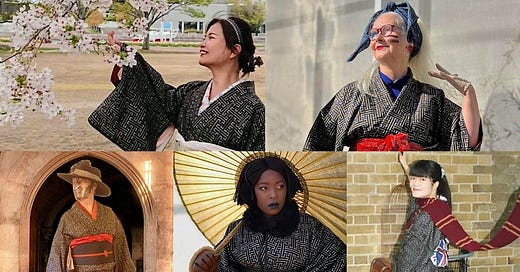



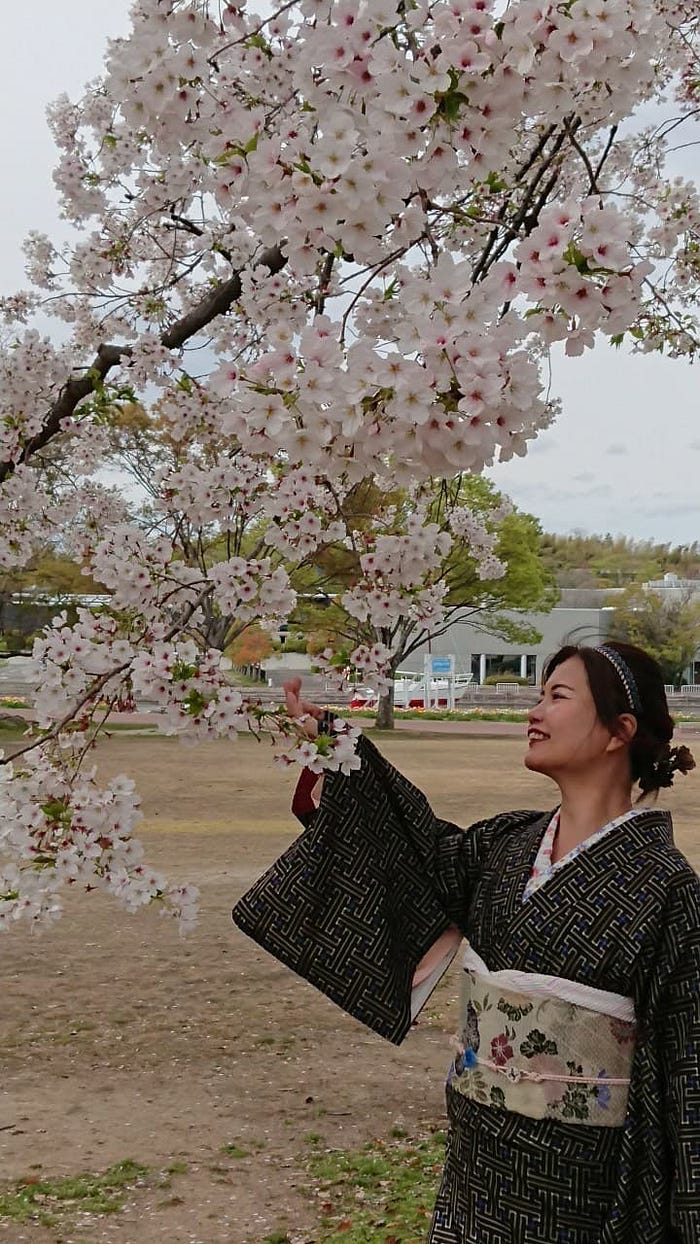
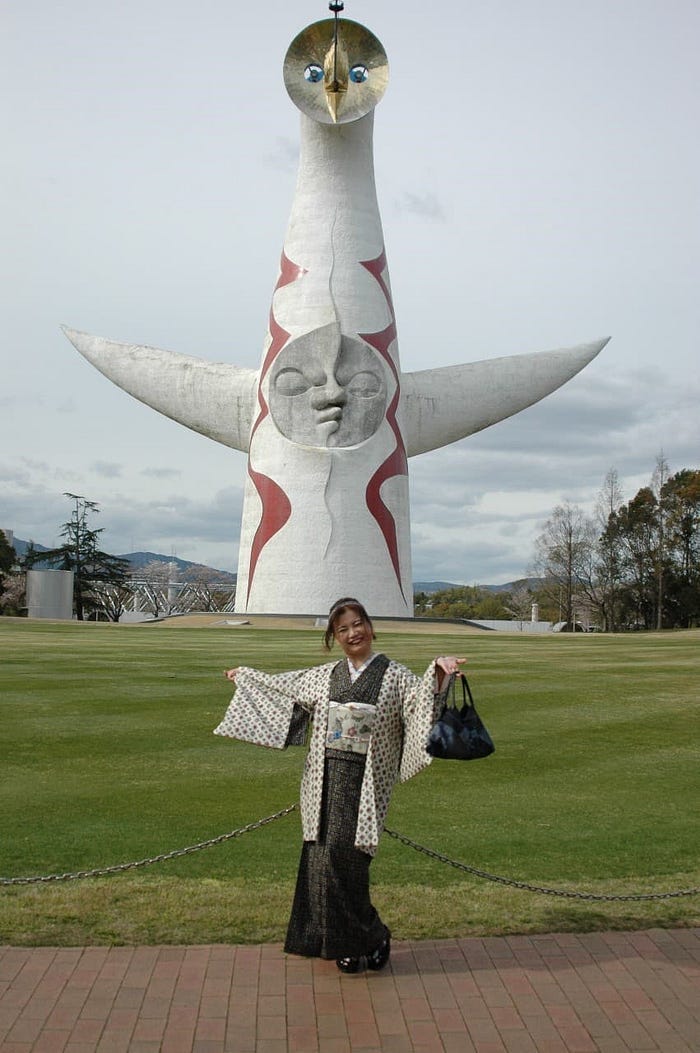
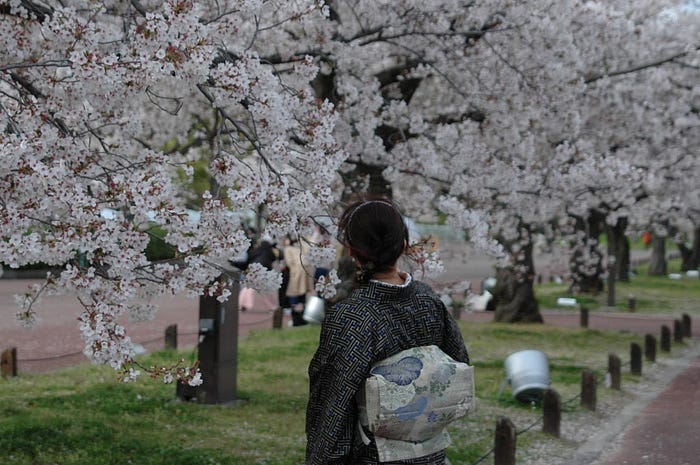
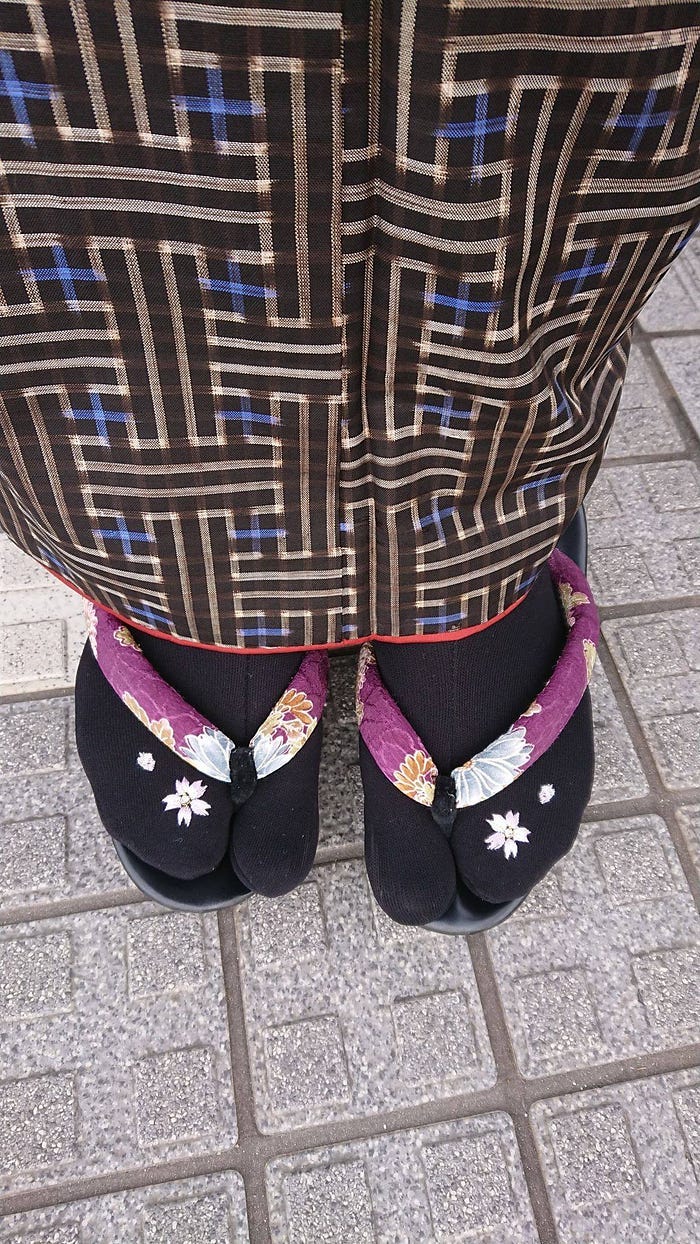
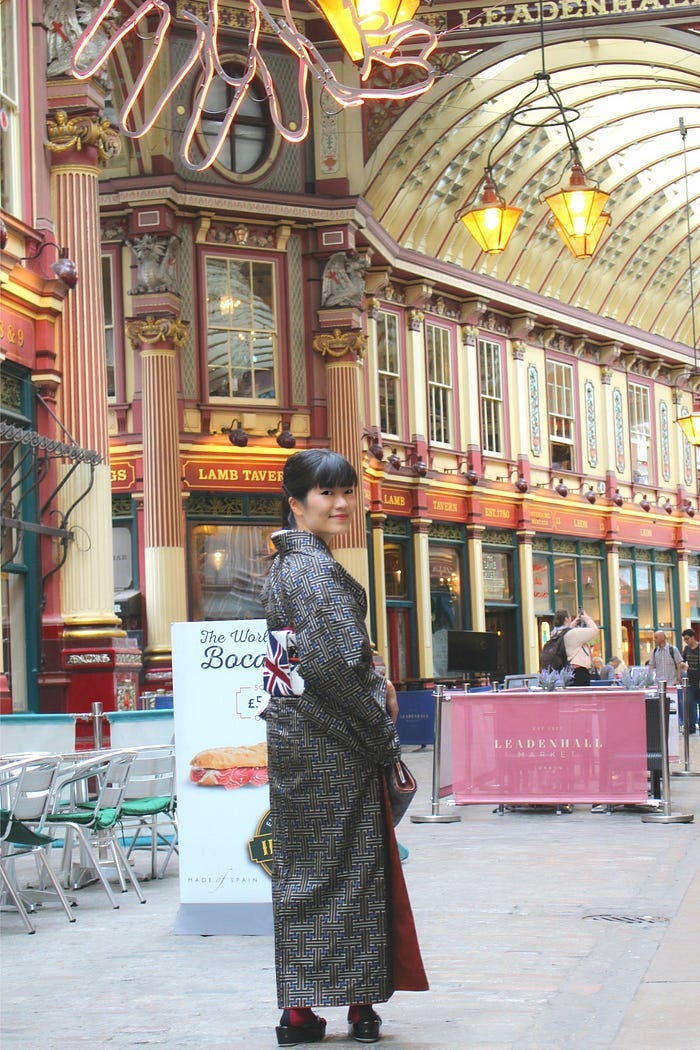
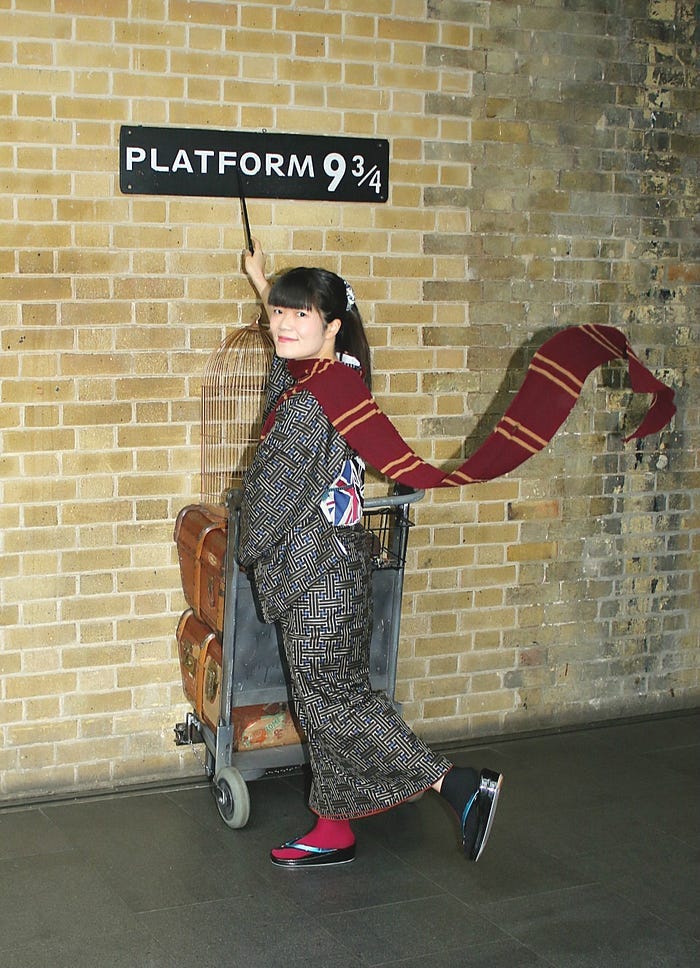
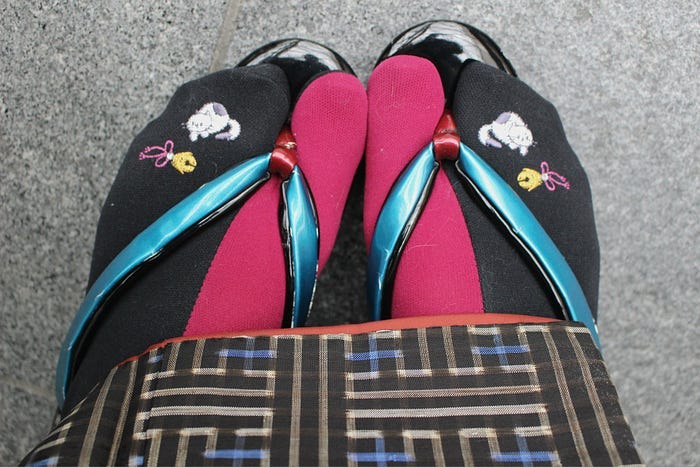
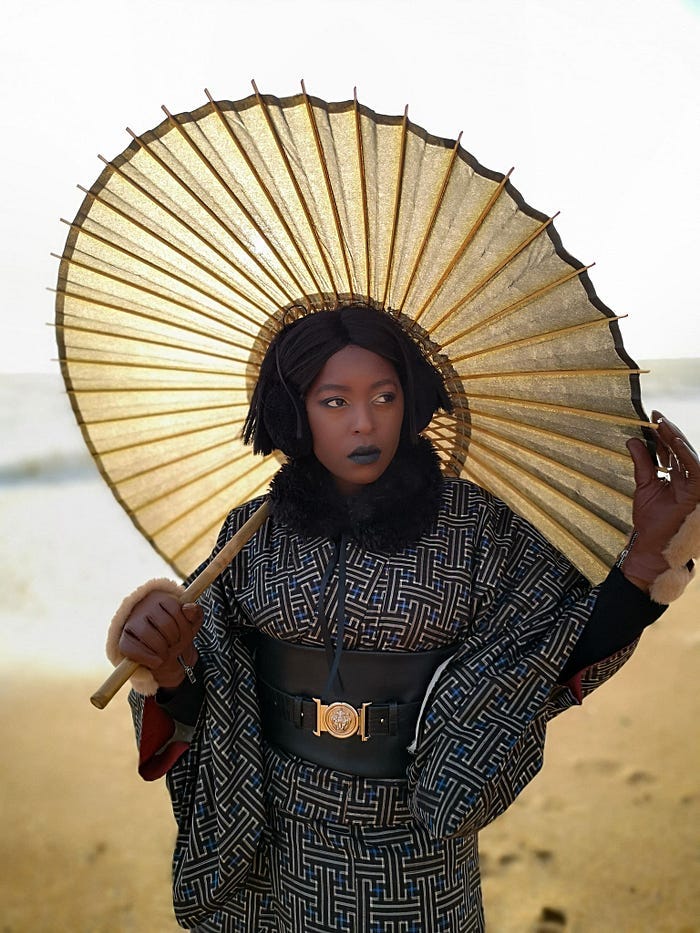
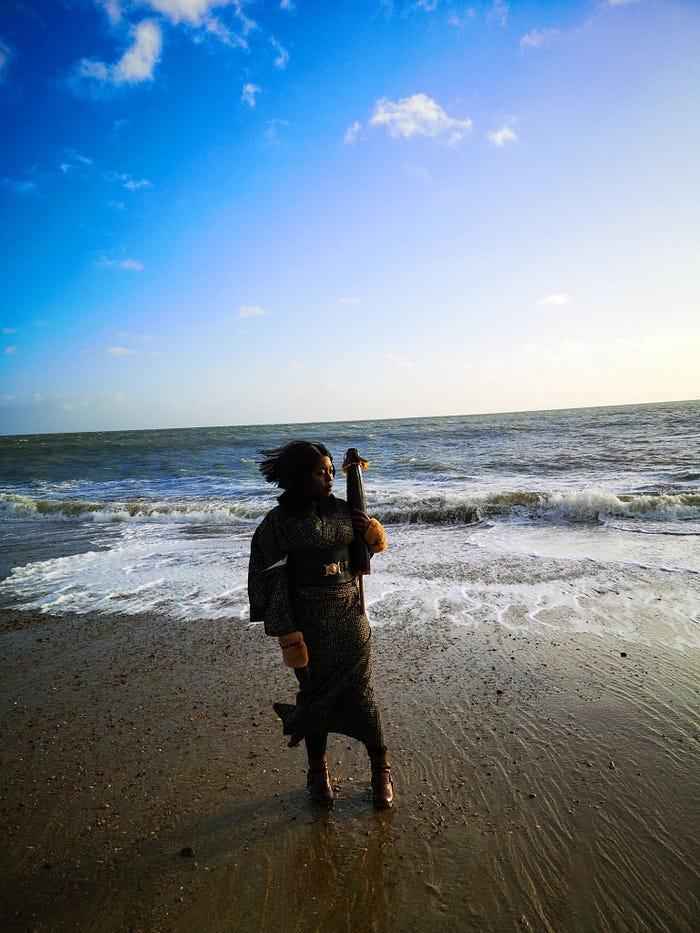
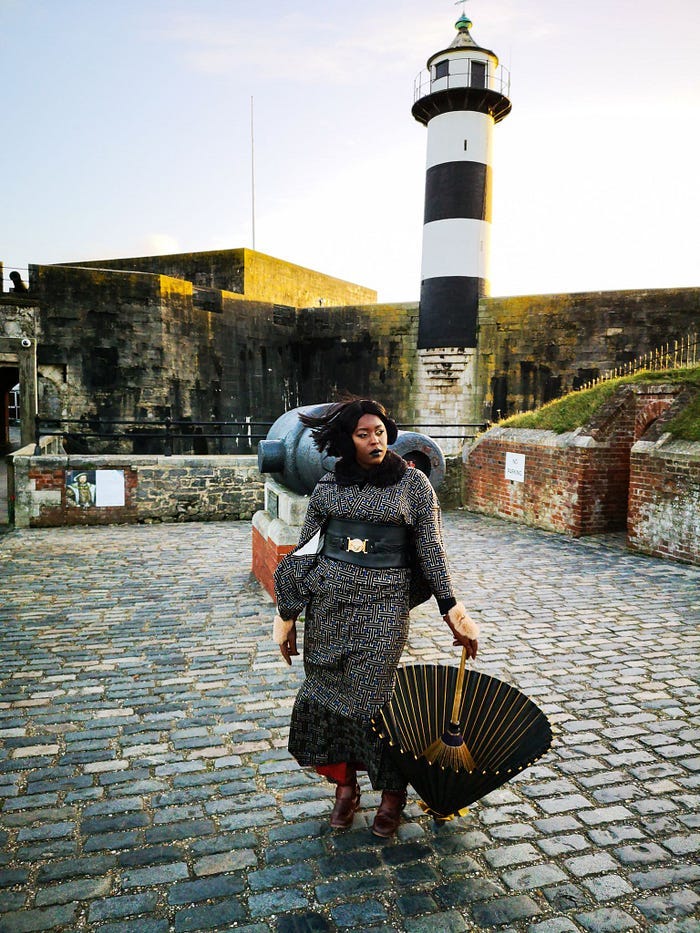
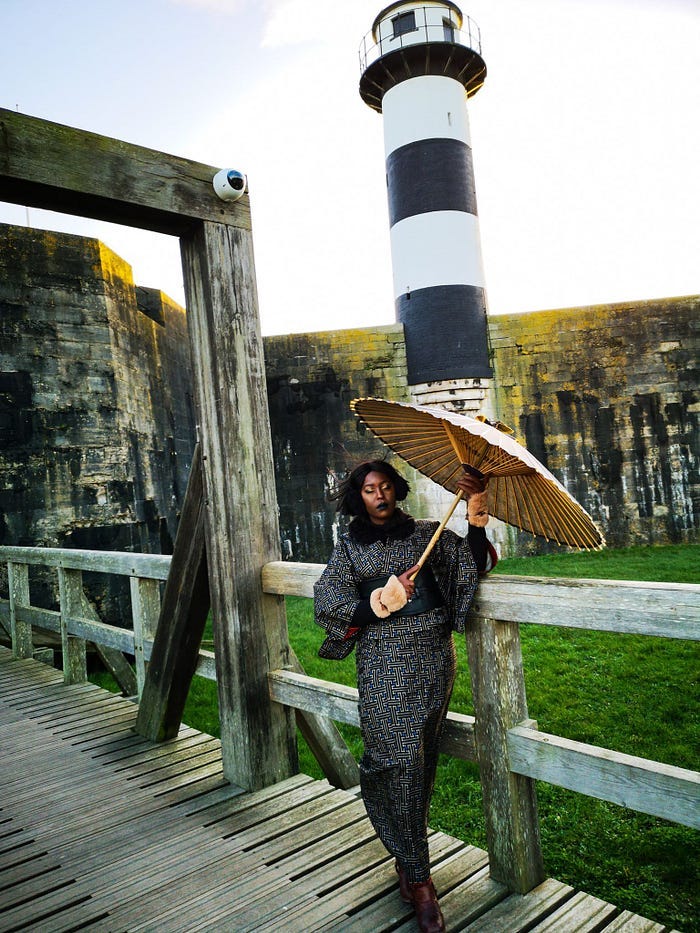
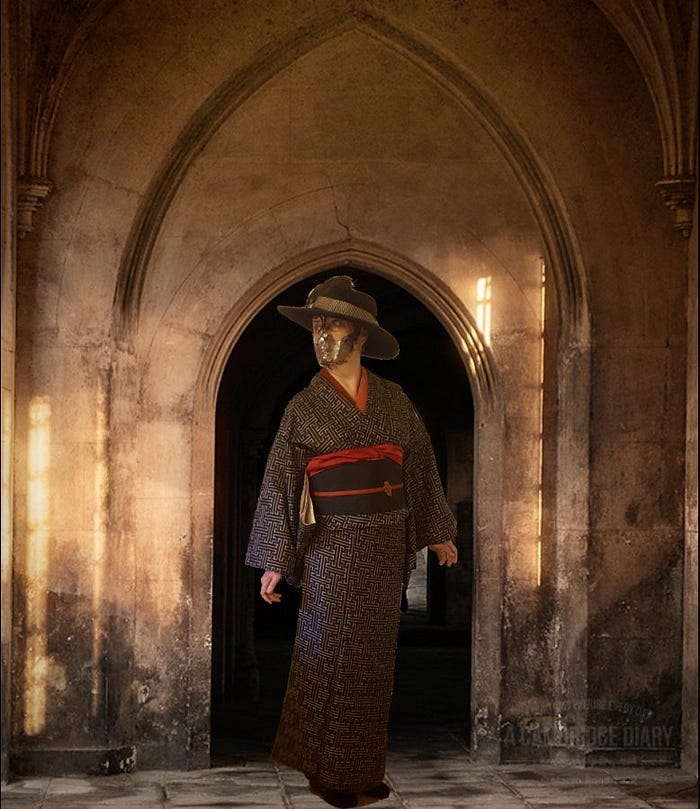


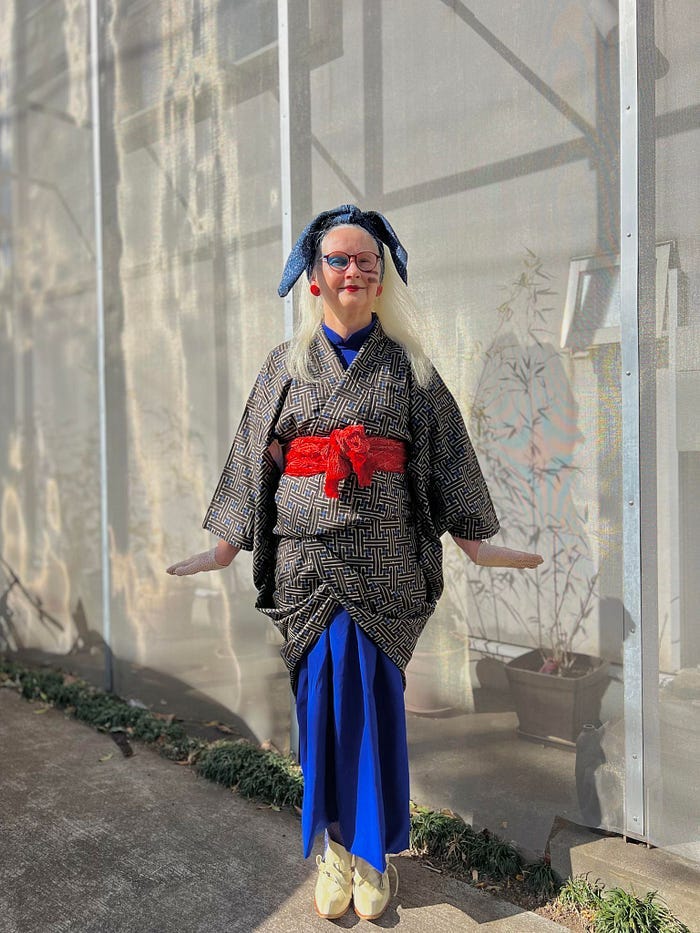
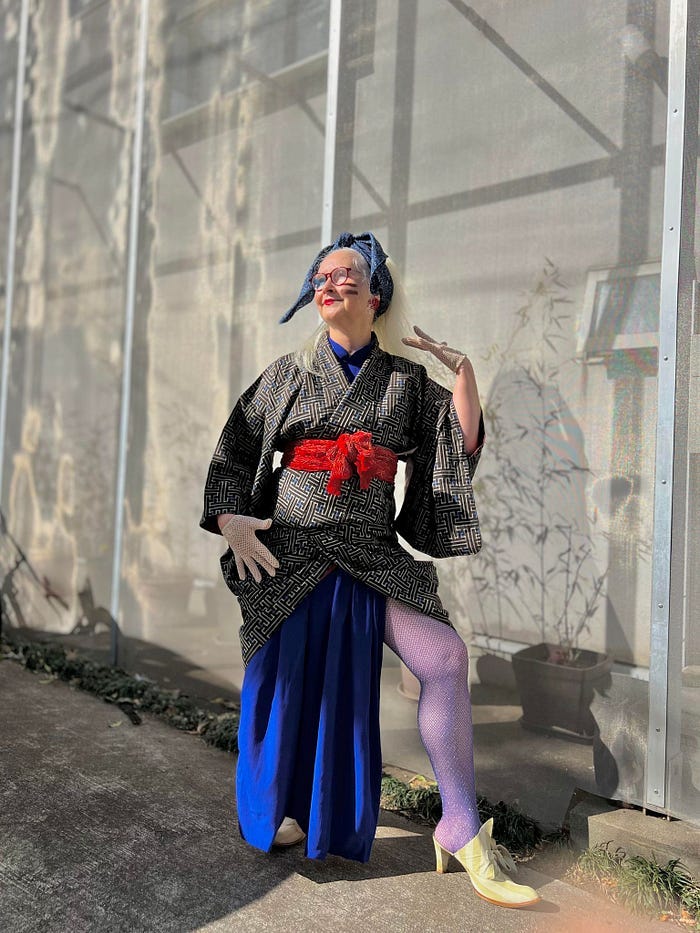

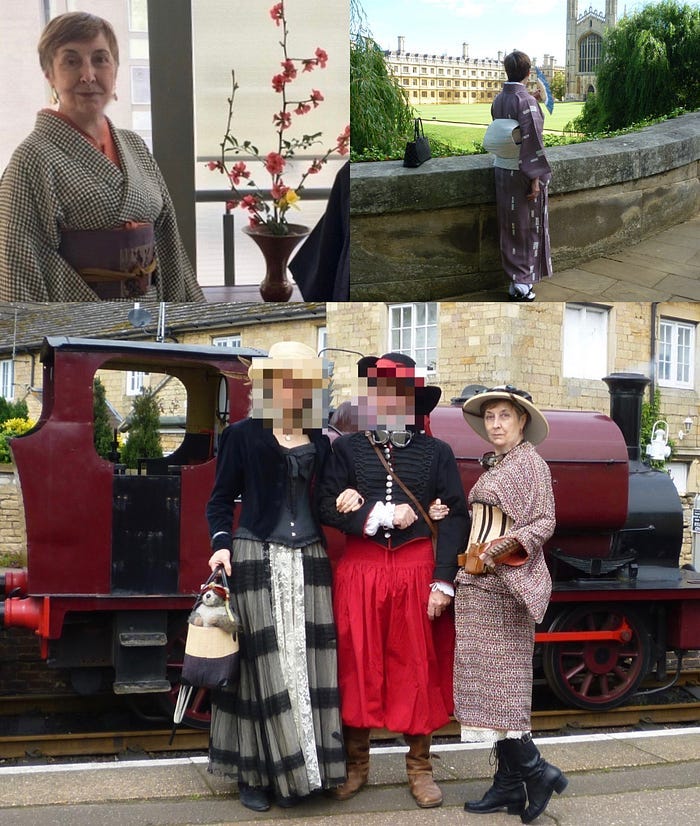
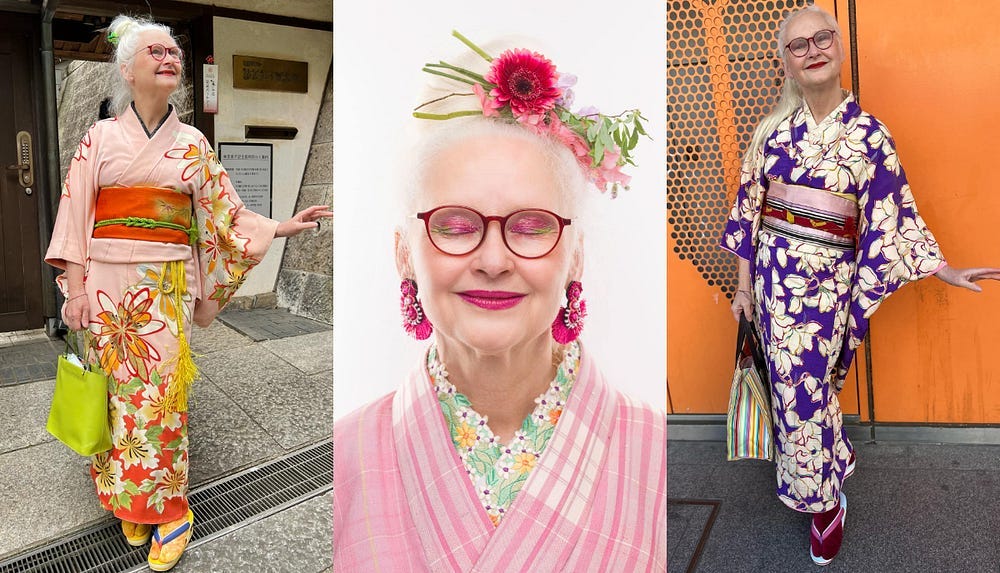
One of my favs!
Lovely pictures!! Kimonos are so beautiful! I would love to visit Japan and wear one, one day. Recently I lived in Thailand and I got to wear Thai traditional clothing. It was an incredible experience! Getting a full immersion in one's culture is an indescribable feeling, it's feels so special!